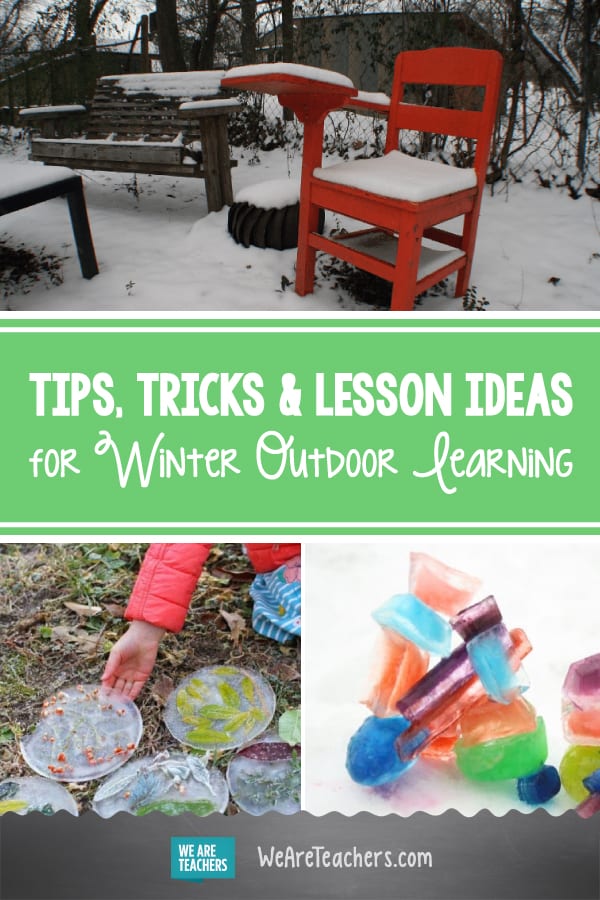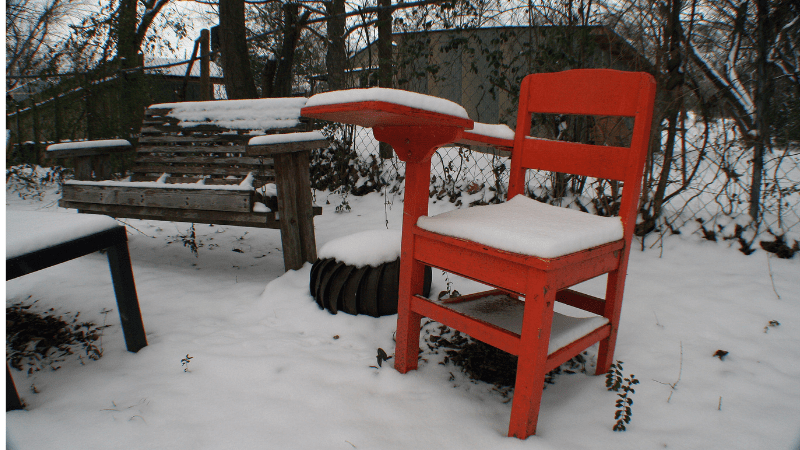Spending time outdoors results in a variety of health benefits. During COVID times, schools started taking learning outdoors as much as they could. But what about when the temperature drops and the snow flies? You don’t have to teach in a forest school or have a yurt to get out there. With flexible expectations, strategic planning—and maybe a shacket or wearable blanket—winter outdoor learning IS possible. We’ve pulled together a helpful list of tips and lesson ideas to get you started.
(Just a heads up, WeAreTeachers may collect a share of sales from the links on this page. We only recommend items our team loves!)
Tips for Winter Outdoor Learning
1. Suit up
You’ve heard the Scandinavian refrain, “There’s no bad weather, only bad clothing.” Plan ahead to help get kids what they need to be safe and comfortable outdoors.
Set the expectation with kids and families that you will be heading outside as long as your school weather guidelines allow. Send a how-to video home with tips for dressing for winter (This video and gear list from Linda McGurk, author of There’s No Such Thing as Bad Weather, has tons of info for kids and teachers too!) Or, combine procedural writing with learning about science concepts like body heat and insulation, and have your class make their own how-to video to share.
Of course, getting the right gear is hard for many families. Publicize gear swaps, Buy Nothing groups, or other local resources to help families obtain hand-me-downs or donated items. You could also approach outdoor apparel retailers about donations. (Hey, it never hurts to ask!)
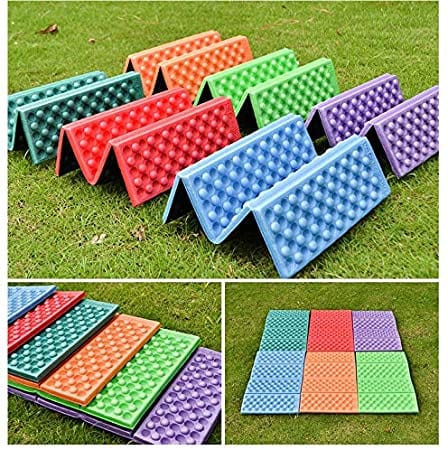
You could keep a few inexpensive products on hand to offset kids’ lack of gear too. Hand warmers can be a game-changer, as can a waterproof hiking seat pad for a kid without snow pants.
2. Embrace friluftsliv
Yep, Scandinavia’s wisdom again. If you love hygge in your classroom, its outdoor counterpart friluftsliv might be just the mindset shift you need to make winter outdoor learning your thing. Friluftsliv roughly translates to “outdoor life,” and it is the outlook Norwegians adopt to remind themselves that even if getting out there feels daunting, once you do (dressed appropriately, of course), it feels surprisingly good. Simply modeling a positive attitude can go a long way towards shifting the collective mood away from complaining about cold toes.
3. Keep it flexible (and maybe, quick)
Philip Mathieu, an outdoor educator in snowy Maine, urges teachers to expect to adapt outdoor learning plans on the fly based on weather and the clothing kids show up wearing. If there’s a sunny spot in the schoolyard, make that your home base on a frigid day. If kids don’t have boots, shift your plans to stay on the pavement. Adjust expectations for writing or snapping photos so kids can keep their mittens on.
You don’t have to stay outside for hours to benefit, either. Even ten minutes of fresh air can be a huge energy and engagement boost. On extra cold, wet, or windy days, give directions indoors, head outside to an easy-access location, then go back inside to close out the lesson.
4. Keep everyone moving
This is Philip’s top tip, echoed by other experts everywhere. Standing still is cold, and being cold is not fun. Plan for lots of movement. You could:
- Create a warm-up ritual, like doing jumping jacks to a fun chant.
- Make traveling from place to place part of the lesson, like having kids run from tree to tree to find items or read directions.
- Get everyone warm before asking kids to be still for a lesson. Take the longer route as a vigorous “hike” to your lesson spot, or work together to stomp down or shovel a path with gusto.
5. Establish a routine
Familiar is always easier. Your students (and you) will get better at transitioning outdoors and build endurance for being out in the cold the more you do it. Plus, if you get your class into a fun and efficient outdoor learning routine in winter, think of how easy it will be to keep it up in the spring!
Tried and True Simple Winter Lesson Ideas
With all the work of getting ready, simpler is often better when it comes to outdoor learning in winter. You could adapt many of these ideas for distance learners, too.
1. Track seasonal changes
Hone kids’ observational skills by asking them to look for signs of winter. We like sharing this Scholastic Watch and Learn video to get kids thinking about possibilities. Kids can notice human-related changes, too, especially in urban settings. Do people dress or walk differently? Do vehicles look or operate differently?
2. Choose winter sit spots
Choose a class or individual “sit spots” for kids to sit and take in their surroundings. This practice is great for mindfulness and observation skills, especially if kids return to the same spot again and again over time. (And if outside just isn’t doable, a window sit spot can also work well.)
3. Take a sensory walk
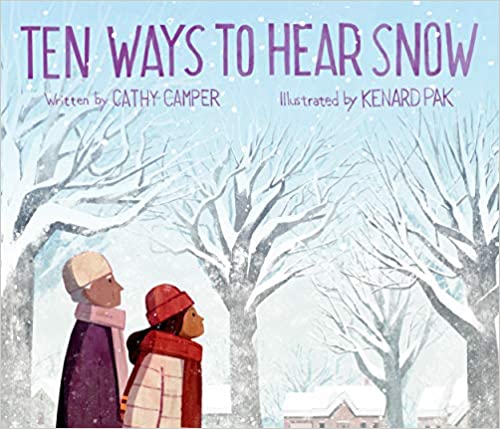
Encourage students to experience the sights, sounds, smells, and feel of winter as they walk. Back inside, use your experiences to write winter poetry or stories. We adore the new title, Ten Ways to Hear Snow, by Cathy Camper, for some inspiration.
4. Go on a winter scavenger hunt
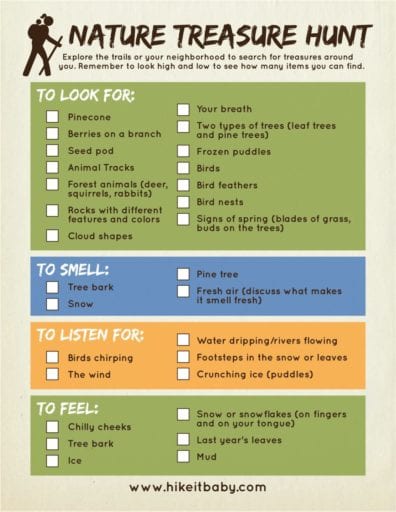
It’s easy to turn your sensory walk into a scavenger hunt. This one from Hike It Baby has clickable and printed versions.
5. Look for winter animal evidence
Hibernating isn’t the only thing animals do in winter. Document signs of winter animal activity like tracks, droppings, holes in the snow, nibbled nuts, and even feathers leftover from a predator’s meal. Or, use binoculars to search out nests in bare trees and try to identify who made them.
6. Be winter weather scientists
Set a container of water outside and assign students to be on “ice patrol.” They can check the container and document what they see each day. Have them compare findings with air temperature and other weather conditions.
When the first big storm is forecasted, be ready with a weatherproof snow gauge. This video from outdoor educator Philip Mathieu shares straightforward directions for kids to make one at school or home.
More Fun Winter Outdoor Learning Ideas
Even if you love it, winter can feel long. Use these fun ideas to keep everyone excited about bundling up.
7. Bring out new materials for snow play
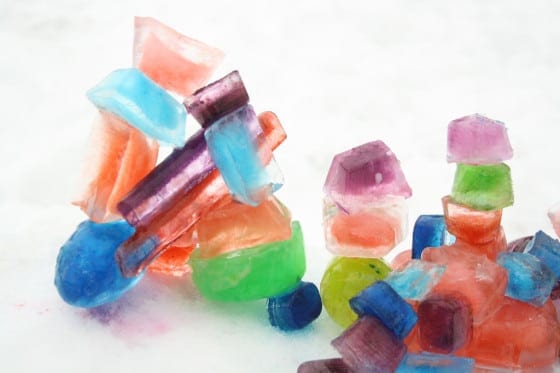
So much learning happens through play, even for older kiddos. To add some variety to winter play:
- Collect a pile of branches and tree limbs for kids to build winter dens and shelters —a great STEM challenge!
- Bring out thrift store cake pans, muffin tins, and cooking utensils for snow “baking.” Add berries, rocks, twigs, and evergreen sprigs for decorations.
- Add food coloring and water to plastic spray bottles for “snow paint.” (Pro tip: Avoid lots of red, unless you want your schoolyard to look like a crime scene.)
- Freeze food coloring and water to make ice cubes for amazing colored ice sculptures!
Source: Happy Hooligans
8. Winterize playground games
Have students write new rules or tips for playing soccer, football, tag, or other playground games in the winter. Or make up new games. We’re totally trying Snow Mini Golf and “Tic-Tac-Snow” from this list from REI.
9. Try “snow-ga”
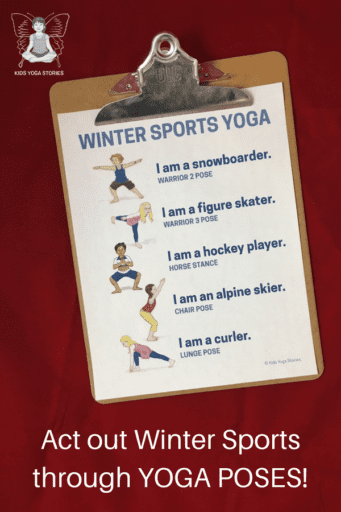
Winter is the perfect setting for outdoor yoga. Kids Yoga Stories has you covered with tons of ideas.
10. Teach science with sledding
Sledding isn’t just fun; it’s full of science concepts. Use sledding to teach about potential and kinetic energy, friction, and more. If you don’t have a big hill or your school doesn’t allow kids to sled, no problem. Have kids build their own mini-sleds for stuffed animals out of recycled materials to explore the same concepts on a smaller scale.
11. Learn about winter animal behaviors (with Jello?!)
Check out Learning for a Sustainable Future’s list of winter animal science lessons for every grade level. “Keep Your Creature Warm” is especially cool; students test out animal shelter options in the schoolyard by trying to keep containers of gelatin mixed with hot water from solidifying.
12. Host a winter storytellers’ circle
Winter is historically known as a time for storytelling in many cultures, including many Native American ones. Bundling up for an outdoor winter storytelling session at school is pretty special. (Some nature-based schools have established campfire protocols, but if you can‘t have the real thing, an artful arrangement of battery-operated candles and string lights can really add to the mood!)
13. Act out wintery book scenes
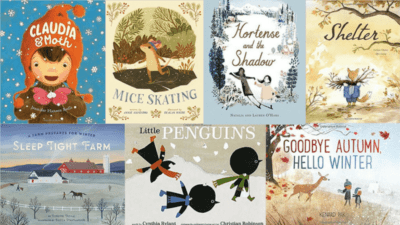
You definitely have your favorite winter books to share with kids. Bring the stories to life by acting them out outdoors. Older students can act out winter scenes from chapter books to practice visualizing. (Anyone up for a trip to Narnia?)
14. Discover the stories tracks tell

Finding and identifying animal tracks in the snow is a classic winter learning activity. If you’re new to tracking, check out this primer from Childhood by Nature. Go deeper by using tracks to craft stories of what the animals (or even people) may have been doing, like with this guided investigation from Nature Mentor. Also, try connecting track stories to learning about making inferences in reading!
15. Make art with ice
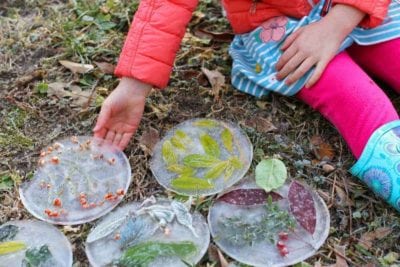
Winter ice is the best way to bring learning about states of matter to life. Check out these gorgeous frozen ice sun catchers —so easy to make with paper plates!
16. Make wintry nature mandalas
Hike around your school grounds to collect nature items like ice pieces, evergreen branches, pinecones, and winter berries. Study examples of mandala designs and create your own using the snow as a canvas. Find directions at Childhood by Nature. Older students can try these painted snow mandalas or even get inspired by the breathtaking work of snow mandala artist Simon Beck.
17. Watch the birds
Birding is an amazing way to engage students with nature at any time, but especially in winter. Set up a store-bought or homemade feeder and track who visits. Check out this lesson plan for tons of background information and ideas adaptable to different ages.
18. Be winter tree scientists
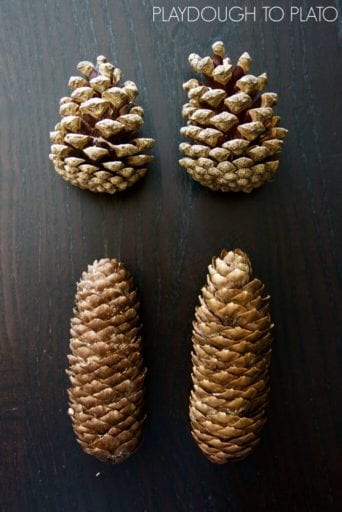
Winter is a unique time to study trees. Students could:
- Learn about ways to identify trees in winter. This PBS Learning Media video gives an overview of bark types, branching patterns, buds, and fruits. This list from Tilth Alliance goes into more detail.
- Compare different types of evergreen trees. This lesson plan will get you started.
- Collect pinecones to bring inside to dissect and investigate how they open and close.
Source: Playdough to Plato
19. Plan (and even plant) for spring
When all else fails, take a cue from gardeners everywhere and dream of spring growth. Kids can browse seed catalogs, measure growing spaces, and draw up plans for your school vegetable garden. As winter winds down, track soil temperatures to figure out when you can plant early spring crops.
You can also plant many types of native seeds in pots to overwinter outdoors before germinating in spring. Wild Seed Project has easy directions to follow, and Prairie Moon Nursery is a go-to for sourcing native seeds for your location.
What are your favorite ways to keep kids learning outdoors in the winter? Share your tips in the comments!
Looking for more articles like this? Sign up for our newsletters!
